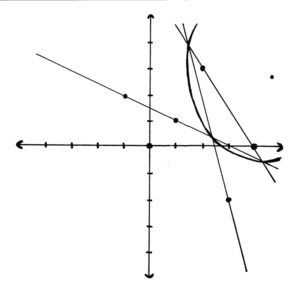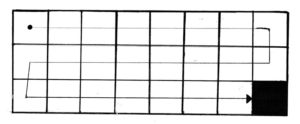You will need to use geometry and algebra to solve this challenge.

We begin this challenge with 2 points. These points are at (1, 1) and (-1, 2). You may know that it only takes 2 points to define a line. You may have guessed that that is what we will use these points for. A second line is drawn, and it passes through the point (3, -2). A third line is then drawn, and it passes through points (2, 3) and (4, 0). A circle is drawn from the 3 intersection points. The radius of the circle is 5 units. The challenge is to find it’s centre.

